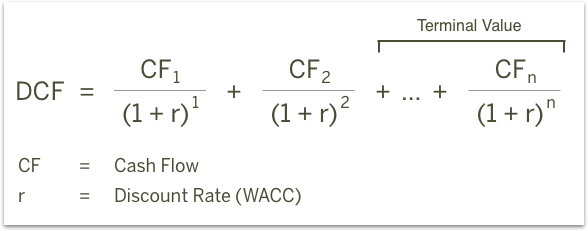Why Intrinsic Value Matters in Stock Investing
In the world of stock investing, understanding a stock’s intrinsic value is crucial for making informed decisions. Intrinsic value represents the true worth of a stock, taking into account its underlying fundamentals, growth prospects, and market conditions. By knowing how to find fair value of a stock, investors can avoid costly mistakes, such as overpaying for a stock or selling a stock too cheaply. Intrinsic value serves as a benchmark, helping investors determine whether a stock is undervalued or overvalued, and make informed buy, sell, or hold decisions. Moreover, it enables investors to identify potential mispricings in the market, capitalizing on opportunities to generate alpha returns. In this article, we will delve into the world of intrinsic value, exploring the different methods for calculating it, the key drivers that influence it, and how to use it to make better investment decisions.
How to Calculate Intrinsic Value: A Step-by-Step Approach
Calculating a stock’s intrinsic value is a crucial step in determining its fair value. There are several methods to calculate intrinsic value, each with its own strengths and weaknesses. The discounted cash flow (DCF) model, for instance, estimates a stock’s intrinsic value by discounting its future cash flows to their present value. This method is useful for companies with stable cash flows and a clear growth trajectory. The earnings multiplier model, on the other hand, uses a stock’s price-to-earnings ratio to estimate its intrinsic value. This method is suitable for companies with a stable earnings growth rate. The asset-based model, which estimates a stock’s intrinsic value based on its net asset value, is useful for companies with significant tangible assets. To find fair value of a stock, investors can use a combination of these methods, considering the company’s specific circumstances and industry norms. By understanding these methods, investors can develop a robust framework for calculating intrinsic value and making informed investment decisions.
Understanding the Key Drivers of Intrinsic Value
A stock’s intrinsic value is influenced by several key factors, including revenue growth, profit margins, return on equity, and dividend yield. Revenue growth, for instance, is a critical driver of intrinsic value, as it indicates a company’s ability to increase its earnings over time. Profit margins, on the other hand, reflect a company’s pricing power and cost structure, and are essential for generating earnings. Return on equity, which measures a company’s profitability from shareholders’ perspective, is also a key driver of intrinsic value. Dividend yield, which represents the income generated by a stock, is another important factor to consider. By understanding these key drivers, investors can gain insights into a company’s underlying fundamentals and estimate its intrinsic value more accurately. For example, a company with high revenue growth, strong profit margins, and a high return on equity is likely to have a higher intrinsic value than a company with stagnant revenue growth and low profit margins. By considering these factors, investors can develop a more comprehensive understanding of a stock’s intrinsic value and make informed investment decisions.
The Role of Financial Statements in Intrinsic Value Calculation
Financial statements play a crucial role in estimating a stock’s intrinsic value. The income statement, balance sheet, and cash flow statement provide valuable insights into a company’s financial performance, position, and cash generation capabilities. By analyzing these statements, investors can identify key trends, patterns, and ratios that influence a stock’s intrinsic value. For instance, the income statement helps to estimate a company’s earnings power, while the balance sheet provides insights into its asset base and liabilities. The cash flow statement, on the other hand, reveals a company’s ability to generate cash and meet its financial obligations. By examining these statements, investors can estimate a stock’s intrinsic value using various methods, such as the discounted cash flow (DCF) model or the earnings multiplier model. For example, a company with a strong track record of revenue growth, high profit margins, and a solid balance sheet is likely to have a higher intrinsic value than a company with stagnant revenue growth and a weak balance sheet. By understanding how to analyze financial statements, investors can develop a more accurate estimate of a stock’s intrinsic value and make informed investment decisions. When learning how to find fair value of a stock, it is essential to understand the role of financial statements in intrinsic value calculation.
How to Identify Red Flags and Mispricings in the Market
Identifying red flags and mispricings in the market is crucial for investors seeking to estimate a stock’s intrinsic value accurately. Red flags can include high valuations, declining earnings, and industry disruptions, which can indicate that a stock’s market price is higher than its intrinsic value. Mispricings, on the other hand, occur when a stock’s market price deviates from its intrinsic value, creating opportunities for investors to buy or sell. To identify red flags and mispricings, investors can analyze various metrics, such as the price-to-earnings ratio, dividend yield, and return on equity. For instance, a stock with a high price-to-earnings ratio and declining earnings may be a red flag, indicating that the market price is higher than its intrinsic value. Conversely, a stock with a low price-to-earnings ratio and strong earnings growth may be a mispricing, presenting a buying opportunity. By learning how to find fair value of a stock and identifying red flags and mispricings, investors can make informed investment decisions and avoid costly mistakes. It is essential to stay vigilant and continuously monitor the market for signs of red flags and mispricings to ensure that investment decisions are based on a stock’s intrinsic value rather than its market price.
Using Intrinsic Value to Make Better Investment Decisions
Estimating a stock’s intrinsic value is a crucial step in making informed investment decisions. By understanding the true worth of a stock, investors can determine whether the market price is reasonable or not. This knowledge enables investors to make better decisions about when to buy, sell, or hold a stock. For instance, if the intrinsic value of a stock is higher than its market price, it may be a good buying opportunity. On the other hand, if the intrinsic value is lower than the market price, it may be a good time to sell. Additionally, investors can use intrinsic value to set a target price for a stock, allowing them to make more informed decisions about when to buy or sell. By learning how to find fair value of a stock and using intrinsic value to guide investment decisions, investors can increase their chances of achieving long-term success in the stock market. Furthermore, intrinsic value can also help investors to avoid emotional decision-making, which is often driven by market volatility and short-term fluctuations. By focusing on the underlying value of a stock, investors can make more rational and informed decisions that are aligned with their investment goals.
Avoiding Common Pitfalls in Intrinsic Value Calculation
Calculating a stock’s intrinsic value requires careful consideration of various factors and avoidance of common pitfalls. One of the most significant mistakes investors make is using incorrect assumptions, such as overly optimistic growth rates or unrealistic discount rates. This can lead to an inaccurate estimate of intrinsic value, resulting in poor investment decisions. Another common pitfall is ignoring qualitative factors, such as management quality, industry trends, and competitive advantages. These factors can have a significant impact on a stock’s intrinsic value, and neglecting them can lead to an incomplete picture of the stock’s true worth. Additionally, failing to update estimates and assumptions can also lead to inaccurate intrinsic value calculations. As new information becomes available, investors must be willing to revisit and adjust their estimates to ensure that their calculation of intrinsic value remains accurate. By being aware of these common pitfalls and taking steps to avoid them, investors can increase the accuracy of their intrinsic value calculations and make more informed investment decisions. For instance, by learning how to find fair value of a stock and avoiding common pitfalls, investors can reduce the risk of overpaying for a stock and increase their chances of achieving long-term success in the stock market.
Putting it all Together: A Real-World Example of Intrinsic Value Calculation
To illustrate the concept of intrinsic value calculation, let’s consider a real-world example. Suppose we want to estimate the intrinsic value of a company like Coca-Cola (KO). We’ll use the discounted cash flow (DCF) model, which is a widely used method for calculating intrinsic value. First, we’ll estimate the company’s future cash flows, including its revenue growth rate, profit margins, and capital expenditures. Based on historical data and industry trends, we assume a revenue growth rate of 4%, a profit margin of 20%, and capital expenditures of $1 billion per year. Next, we’ll calculate the present value of these cash flows using a discount rate of 8%, which reflects the company’s cost of capital. After running the calculations, we estimate the intrinsic value of Coca-Cola to be around $55 per share. This is significantly higher than the current market price of $45 per share, indicating that the stock may be undervalued. By learning how to find fair value of a stock and applying it to real-world examples, investors can gain a deeper understanding of a company’s true worth and make more informed investment decisions. In this case, the calculation suggests that Coca-Cola may be a good buying opportunity, but investors should always conduct their own research and consider multiple perspectives before making a decision.







